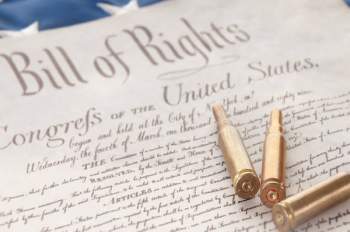
Understanding 2nd Amendment Arguments

One can argue that the 2nd amendment has raised more questions, controversy, and court rulings than any other law or right in US history. The 2nd amendment reads as follows-"A well regulated Militia, being necessary to the security of a free state, the right of the people to keep and bear arms, shall not be infringed."
Federal courts have further defined the amendment as-not applying to the states, a collective right, pertaining to the militia, and protecting only those situations where it can be proved that an individual possessing a firearm has some relevance to a well-regulated militia. Although this ruling has been documented, a more recent ruling (2008) defined the right to bear arms as an individual right. The opinions and interpretations seem to vacillate based on society or decade.
The controversy revolved around the interpretation of this right revolves around a few basic questions-Does the 2nd amendment mean that I as an individual have a right to carry a gun? Does this amendment only reflect gun control and gun rights of a militia or for the individuals in that militia? How does this amendment extend towards my right to carry a gun in regards to concealment?
There are three basic interpretations of the 2nd amendment
The civilian militia interpretation-The 2nd Amendment is no longer valid today because a militia system does not exist. It's simply an archaic and obsolete passage in the bill of rights.
The individual rights interpretation-The right to carry a gun is an individual right, and should be held in the same order as free speech or trial rights.
The median interpretation-Gun control and gun rights is an individual issue, but the 2nd Amendment slightly restricts it by implementing such rights only for militia purposes.
The ambiguity and complexity that revolves around the 2nd amendment is attributed to its varying interpretations. Usually, ambiguous laws or amendments have supreme court rulings which act as precedents. In the case of the right to carry a gun, or gun control and gun rights, the precedent has yet to be established.
The first Supreme Court ruling that focused primarily on the "true" meaning of the 2nd Amendment was U.S. vs Miller (1939.) During this hearing the Court ruled Miller, the Court confirmed a median interpretation, holding that "the 2nd Amendment protects an individual right to bear arms, but only if the arms in question are those that would be useful as part of a citizen militia." Unfortunately this ruling did very little to further elaborate on the true laws towards gun control and gun rights.
Just recently there was a ruling that will help establish the right to carry a gun in the United States. In 1975, the Firearms Control Regulations Act prohibited residents in Washington DC from owning handguns (excluding those who purchased their firearm before 1975.)
This law which was considered revolutionary in regards to gun control and gun rights, was later overturned in 2007 by the United States Court of Appeals for the District of Columbia Circuit in Parker vs Washington DC. The Supreme Court later upheld the ruling in 2008 citing that the city's handgun ban violated individuals' 2nd Amendment right to own a gun.
This ruling in essence helps clarify the right, but it still does not solidly answer the interpretation questions. Ambiguity still exists because states and cities can and have passed laws outlawing a citizens right to carry a gun, or by altering gun control and gun rights.
NEXT: AWB



















